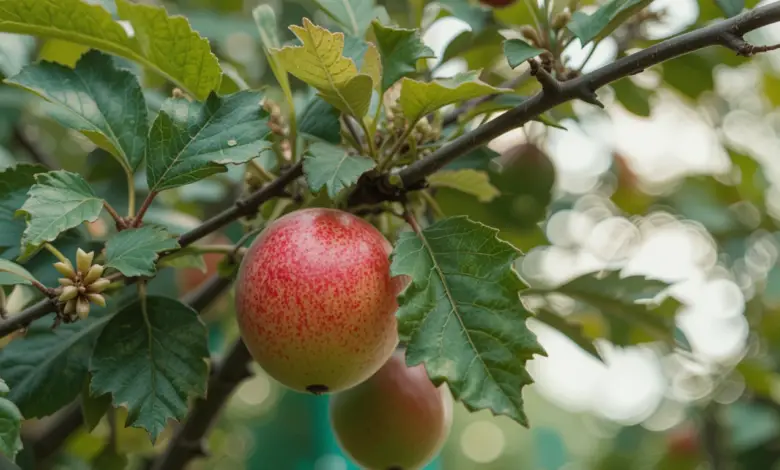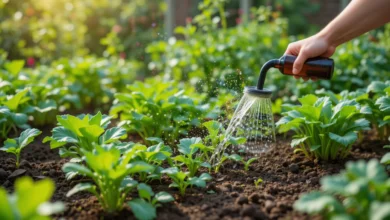Fruit Trees That Can Grow in Cold Climates – A Guide for Beginners

Introduction Growing fruit trees in cold climates might sound like a challenge, but with the right knowledge and selection of fruit trees, it’s definitely possible. Whether you live in a chilly area or just want to add more variety to your garden, choosing fruit trees that can withstand low temperatures is crucial. In this guide, we’ll introduce you to some of the best fruit trees that thrive in colder regions, along with tips for taking care of them.
Understanding Cold Climates
Before diving into the types of fruit trees, it’s important to understand what cold climates mean for plants. Cold climates typically have long winters with freezing temperatures, short growing seasons, and occasional frost in the spring or fall. These weather conditions can make growing certain types of fruit more difficult. But don’t worry! Some trees are well-suited for these challenges and can still produce delicious fruits.
Read More: Best Time to Water Your Vegetable Garden – Expert Tips for Healthy Plants
Best Fruit Trees for Cold Climates
1. Apple Trees
Apple trees are one of the most popular fruit trees and are well-known for growing in colder regions. In fact, many varieties of apples need a period of chilling hours (between 32°F to 45°F or 0°C to 7°C) to produce fruit. These trees do well in USDA hardiness zones 3-7, making them a great choice for cold climates.
Popular Cold-Hardy Apple Varieties:
- Honeycrisp: Famous for its sweet and tart flavor, this variety thrives in colder climates.
- Gravenstein: A hardy apple that grows well in zones 4-7, known for its crisp texture.
- Northern Spy: Great for making pies, this apple is known to tolerate cold winters.
Care Tips:
- Choose a sunny spot to plant your apple tree.
- Ensure it gets plenty of water, but avoid overwatering.
- Prune the tree regularly to remove dead wood and help with airflow.
2. Cherry Trees
Cherries can also thrive in cold climates, but it’s important to choose the right variety. Sour cherries are generally more cold-hardy than sweet cherries. These trees can withstand freezing temperatures and still produce delicious fruit.
Popular Cold-Hardy Cherry Varieties:
- Montmorency: This sour cherry is perfect for colder zones and is often used in pies and jams.
- North Star: Another sour cherry variety, this one is known for its compact size and ability to thrive in cold weather.
Care Tips:
- Cherry trees love well-drained soil, so make sure the soil isn’t too soggy.
- Plant in a spot where the tree can get plenty of sunlight, especially during the colder months.
- Be prepared to cover the tree during extreme frost conditions.
3. Pear Trees
Pear trees are another great option for cold climates. These trees are known to tolerate colder temperatures, especially certain varieties that are bred to survive harsh winters. Pears grow best in zones 4-9, which makes them a good choice for regions with chilly winters.
Popular Cold-Hardy Pear Varieties:
- Bartlett Pear: This variety grows well in zones 4-8 and is prized for its juicy, sweet fruit.
- Kieffer Pear: Known for its resistance to cold and disease, the Kieffer pear produces a crunchy fruit that’s great for cooking.
Care Tips:
- Pear trees need full sunlight to thrive.
- Regular watering is important, especially in dry conditions.
- Prune your pear tree in late winter or early spring to promote healthy growth.
4. Plum Trees
Plum trees, especially the hardy varieties, are another great fruit option for cold climates. They need a period of winter chill to grow fruit and can thrive in regions with cool winters and mild summers.
Popular Cold-Hardy Plum Varieties:
- Stanley Plum: This variety is hardy and can handle cold winters. It’s perfect for regions with shorter growing seasons.
- Methley Plum: A variety that blooms early and is great for zones 4-9.
Care Tips:
- Prune your plum tree to remove any damaged or diseased wood.
- Make sure your plum tree gets well-drained soil to prevent root rot.
- Water deeply, but avoid overwatering.
5. Peach Trees
Peach trees are often associated with warmer climates, but some varieties are hardy enough to grow in cold regions. Cold-hardy peach trees are bred to withstand winter temperatures and are ideal for growing in zones 4-8.
Popular Cold-Hardy Peach Varieties:
- Contender Peach: This variety is specifically bred for cold climates and can survive temperatures as low as -20°F (-29°C).
- Reliance Peach: Known for its ability to survive in cold climates, this peach tree produces sweet, juicy fruit.
Care Tips:
- Peaches need full sun to grow properly, so plant them in a sunny area.
- Prune your tree to remove dead or damaged branches.
- Water your peach tree deeply and regularly.
6. Currant and Gooseberry Bushes
Although not trees, currant and gooseberry bushes are excellent fruiting plants that can thrive in cold climates. These bushes are tough and resilient, making them perfect for gardeners in colder regions.
Popular Cold-Hardy Varieties:
- Red Currant: This bush produces small red berries that are tart and great for making jams.
- Gooseberries: Gooseberry bushes can withstand temperatures as low as -30°F (-34°C) and produce tangy, green berries.
Care Tips:
- Plant in well-drained soil.
- Gooseberries and currants need regular pruning to keep the bushes healthy.
- These bushes do well in partial shade or full sun.
Tips for Growing Fruit Trees in Cold Climates
- Choose Cold-Hardy Varieties: Make sure the fruit tree varieties you select are known to grow in cold climates. Some trees are better equipped to handle harsh winters than others.
- Protect Trees During Winter: Even cold-hardy trees can use a little extra protection in the winter months. Consider wrapping your tree with burlap or using a tree guard to shield it from the wind and cold.
- Plant at the Right Time: The best time to plant fruit trees is in the spring or early fall. This allows the tree to establish strong roots before the colder weather arrives.
- Prune Regularly: Pruning helps maintain the tree’s shape and removes dead or diseased branches. Prune during late winter or early spring to prepare your tree for the growing season.
- Provide Proper Watering: Cold weather doesn’t mean your tree doesn’t need water. Water your fruit trees regularly during dry spells, but make sure the soil has good drainage.
- Mulch Around the Base: Mulching helps keep the soil warm during winter and keeps the roots insulated. This can be especially helpful during cold spells.
Conclusion
Growing fruit trees in cold climates is not only possible but can be a rewarding experience. By choosing the right varieties, caring for them properly, and providing protection during the winter months, you can enjoy fresh, homegrown fruit even in the chilliest of regions. Start with the varieties mentioned in this guide, and you’ll be on your way to creating a thriving, fruit-filled garden.




